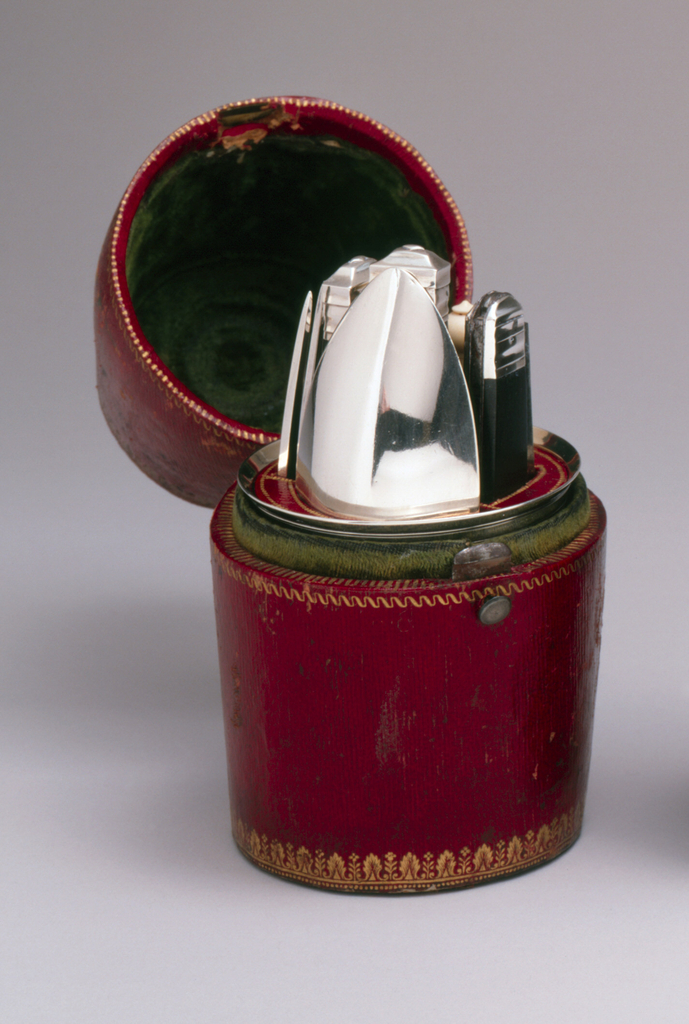Sumptuously crafted by the Paris silversmith Gavet, this cutlery set was a luxury object intended for stylish travelers in the early nineteenth century. Cleverly designed with nesting parts, the set includes everything an affluent city dweller could need to dine outdoors, including a fork and spoon with detachable ebony handles inlaid with silver, a folding steel knife, a salt and pepper container with a delicate ivory finial, a corkscrew, and a silver cup–all within an elegantly gilded red leather case. The design’s classical proportions and restrained shield ornaments reflect the prevailing French Empire style.
Until the late seventeenth century, diners brought their own eating utensils to meals, as hosts were not expected to provide cutlery for guests. The earliest travel cases contained only knives; later examples include a fork and spoon, reflecting the gradual acceptance of those implements. Throughout the eighteenth century, upper class travelers carried dining kits and other ingenious collapsible devices for use at inns and outdoor meals. Such sets were popular among young aristocrats traveling on the Grand Tour.
By the early nineteenth century, repas en plein air, rustic meals in rural settings, were popular among the Parisian bourgoise who would take recreational day trips to locations surrounding the capital. The forest of Saint-Germain-en-Laye, just west of Paris, was recommended in an 1815 guidebook as a place where “everyone eats with a hearty appetite, enjoying the beauty of the site, the freshness of the air and that precious liberty so rarely found in the city”.[1] Within Paris, informal meals could be enjoyed along the Seine, where the river provided a natural setting for leisure and sociability.
[1] Cuchet and Lagaranciere’s Almanach des Plaisir, as cited in: Jacobs, Marc, and Peter Scholliers. Eating Out in Europe: Picnics, Gourmet Dining, and Snacks Since the Late Eighteenth Century. Oxford: BERG, (2003), 147.
Rebekah Pollock is a decorative arts historian specializing in European ceramics and eighteenth-century print culture.

One thought on “Have Spoon, Will Travel”
John Batty on October 26, 2017 at 3:48 pm
It would be nice to see some images of the contents out of the case.
I have a London made example in a tooled black leather case the beaker and other objects are struck with French import marks mine is made by John Wirgman London circa 1780
Will send images if you wish to compare?